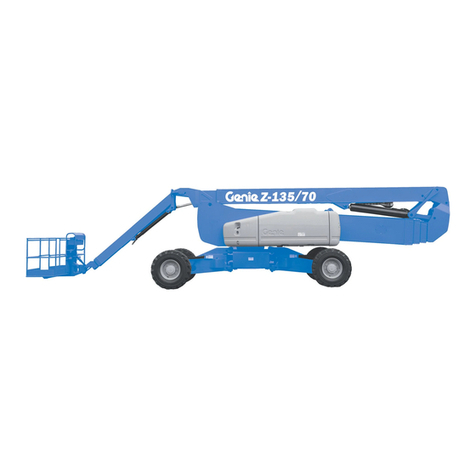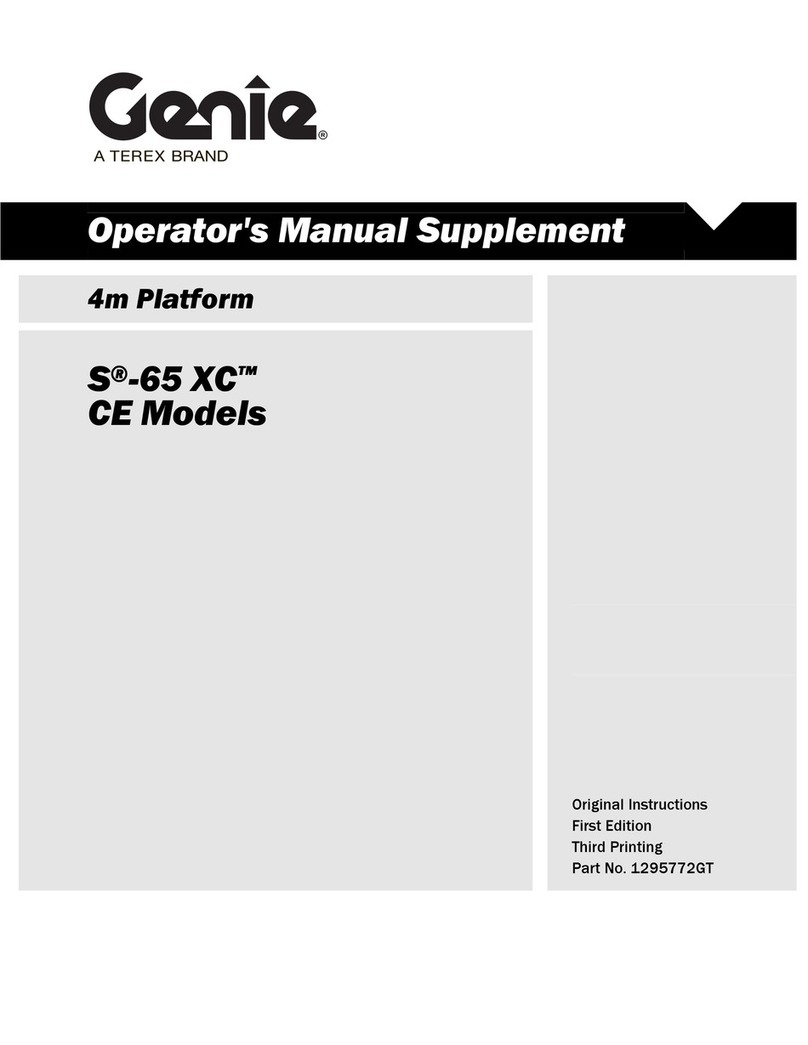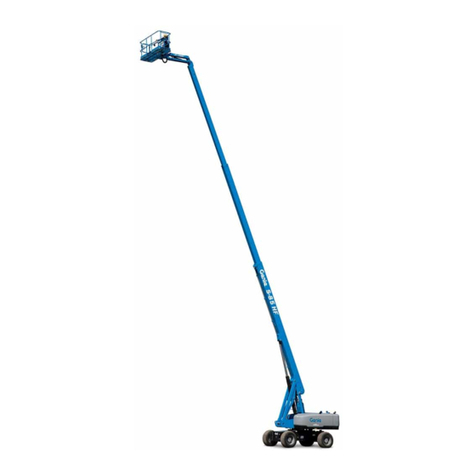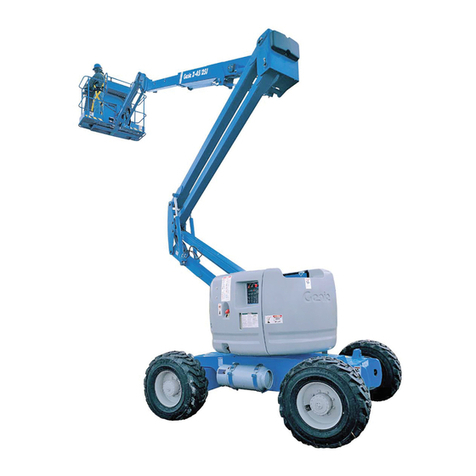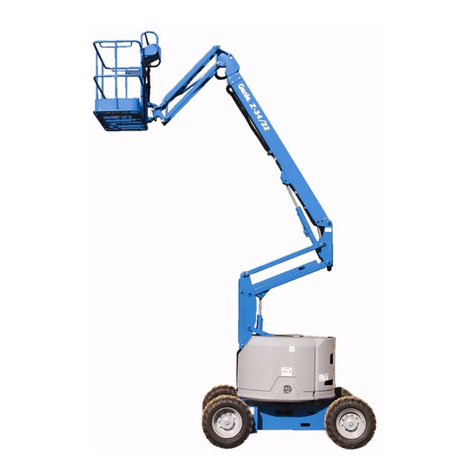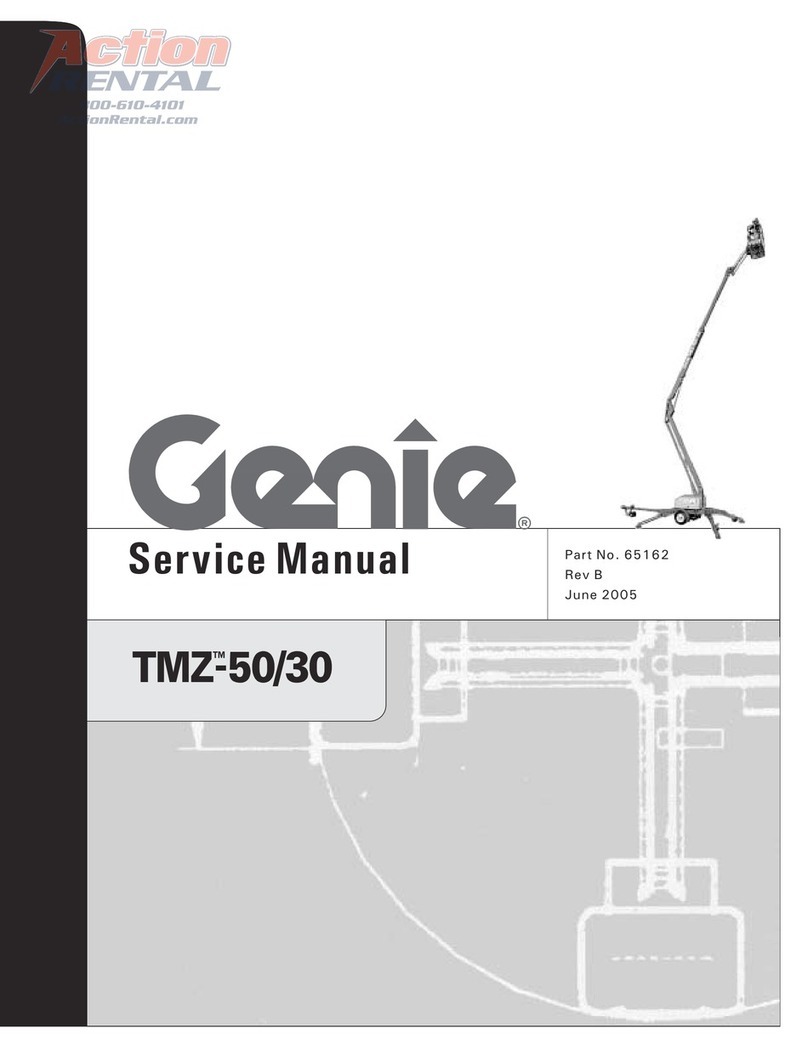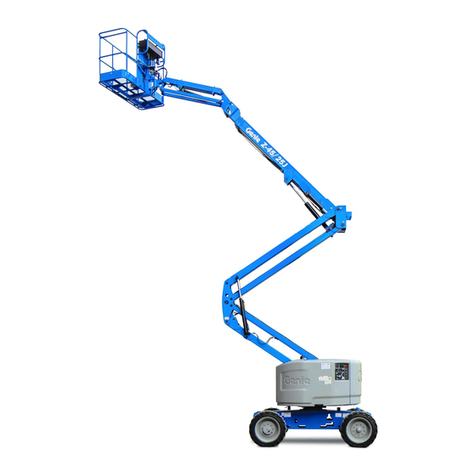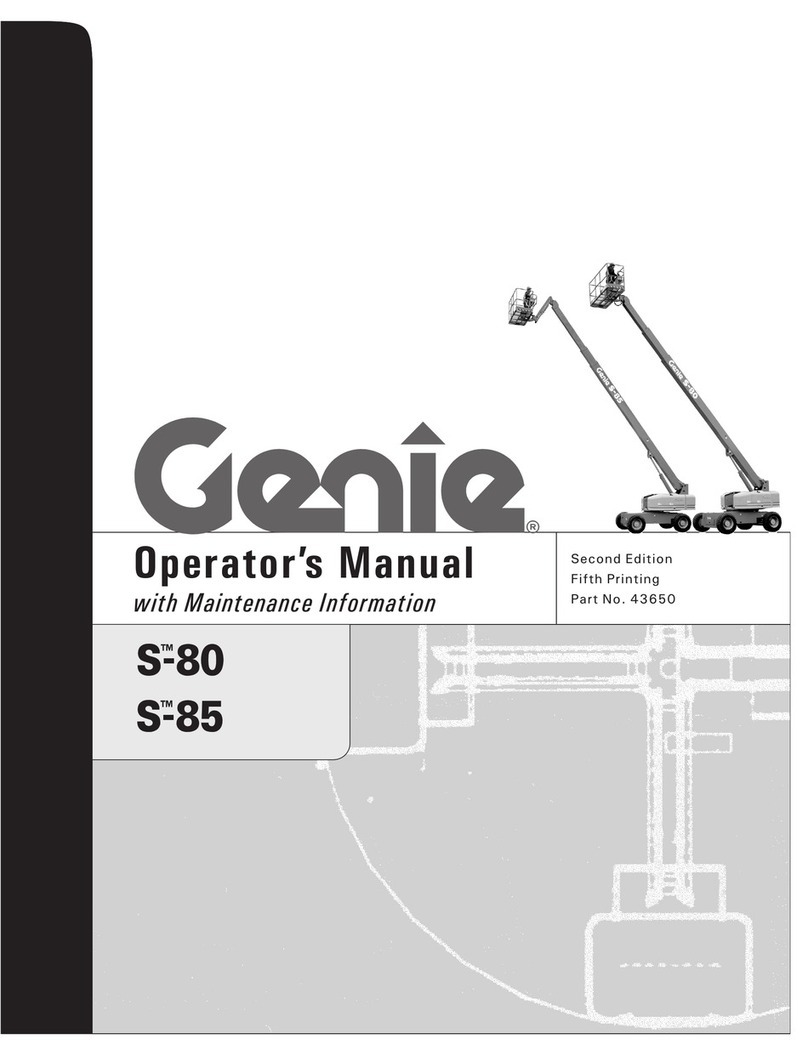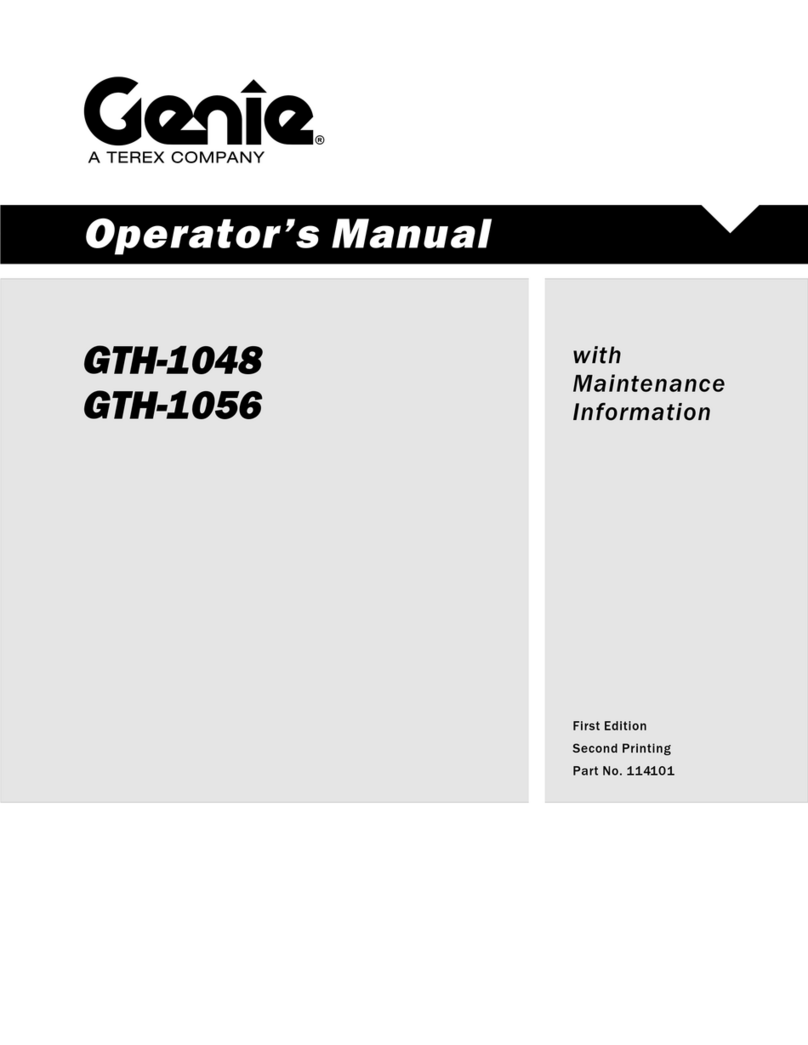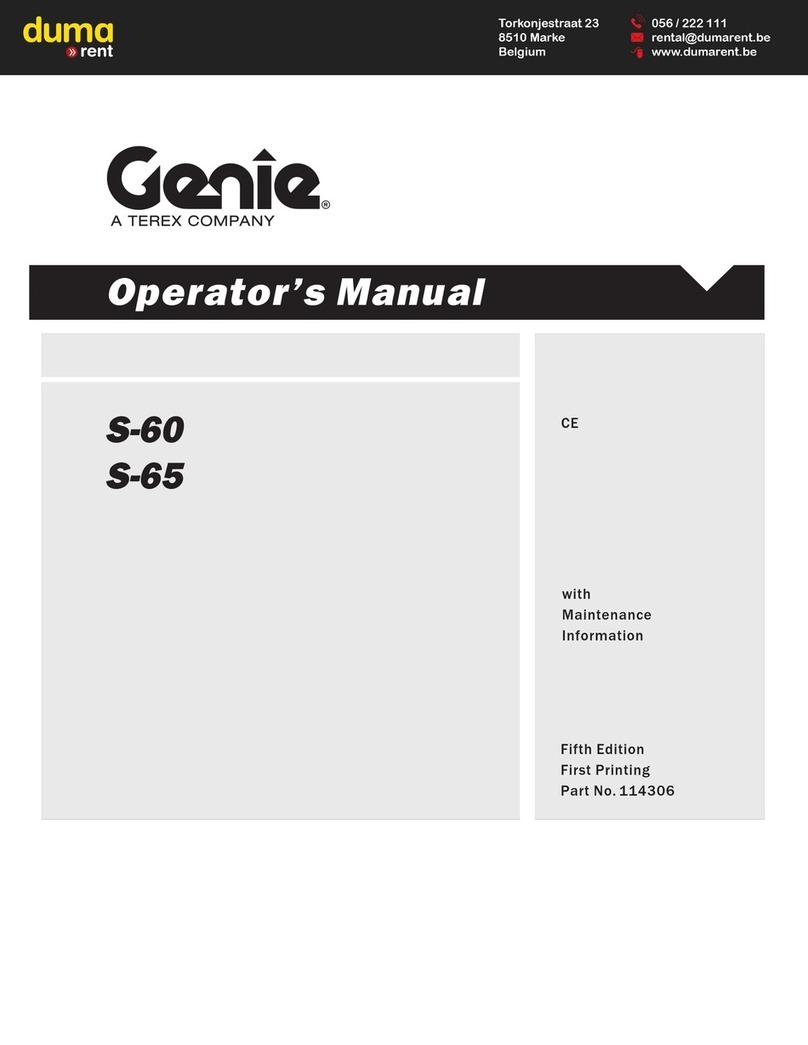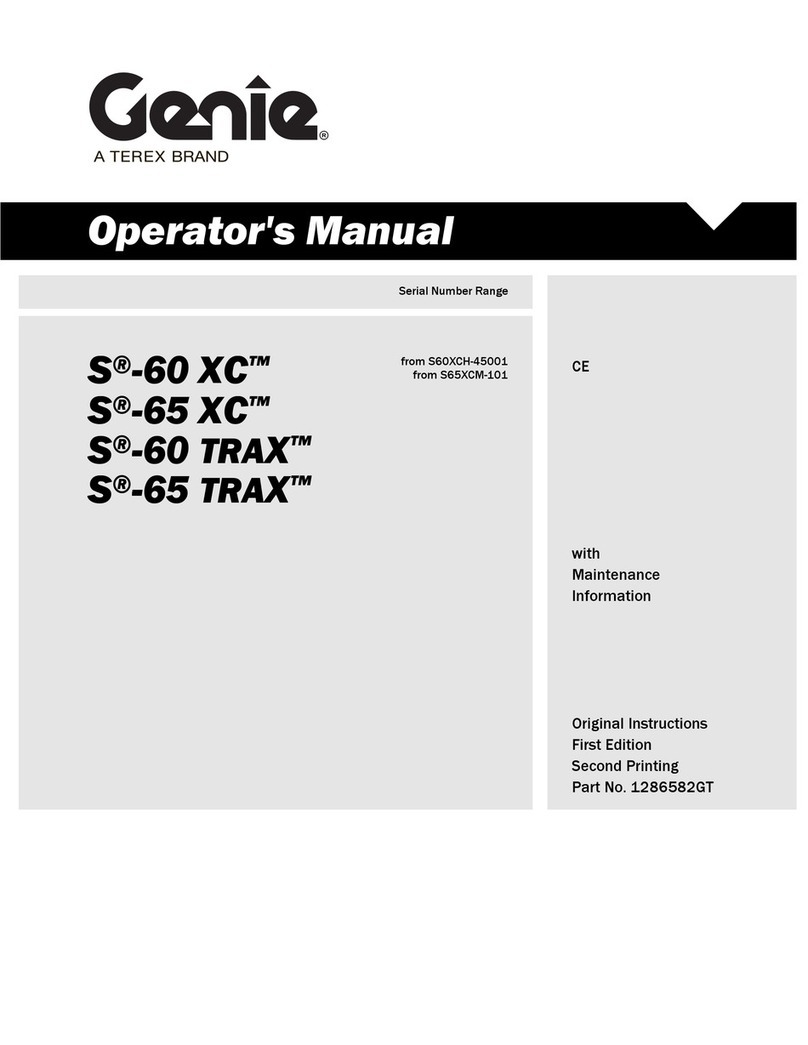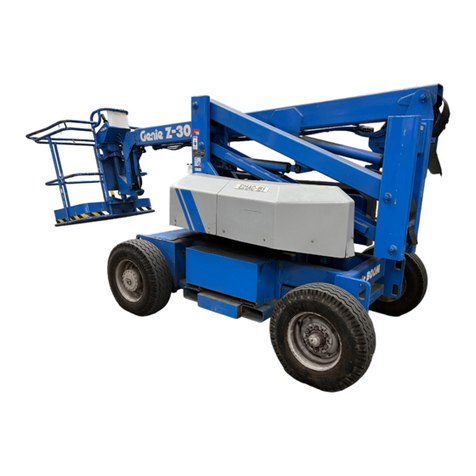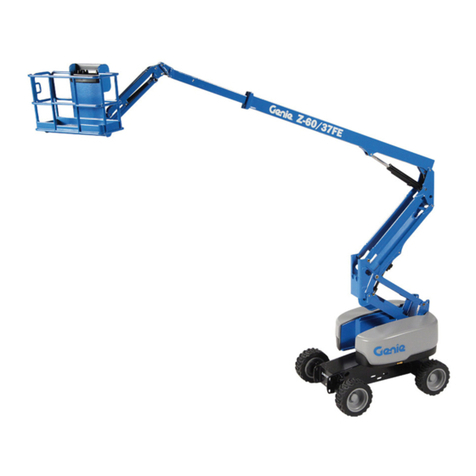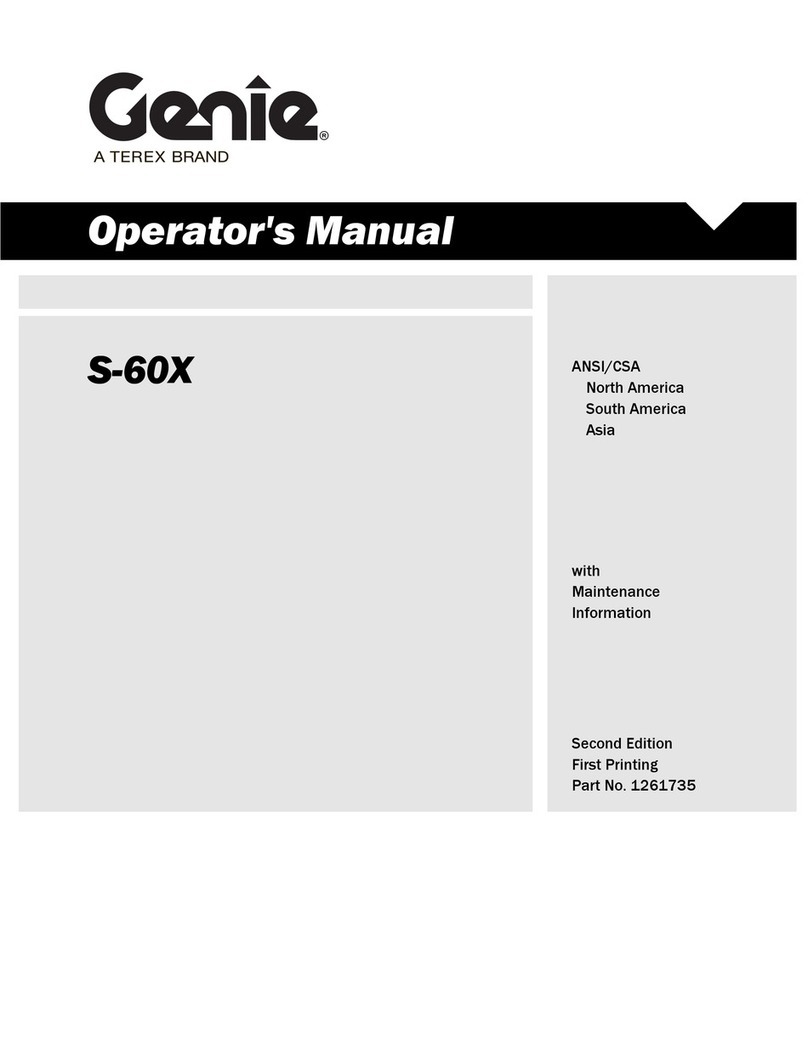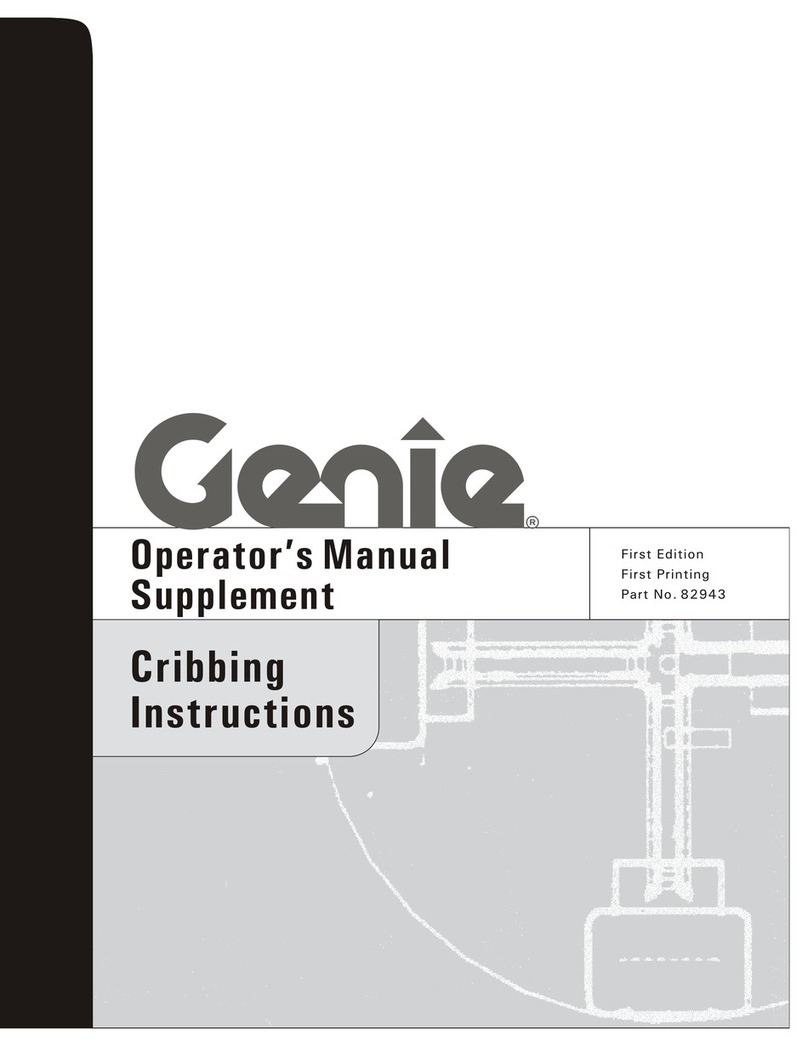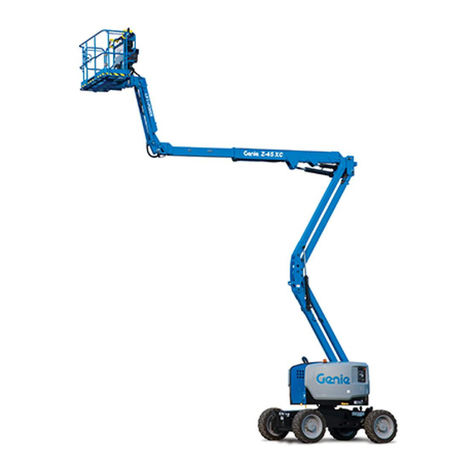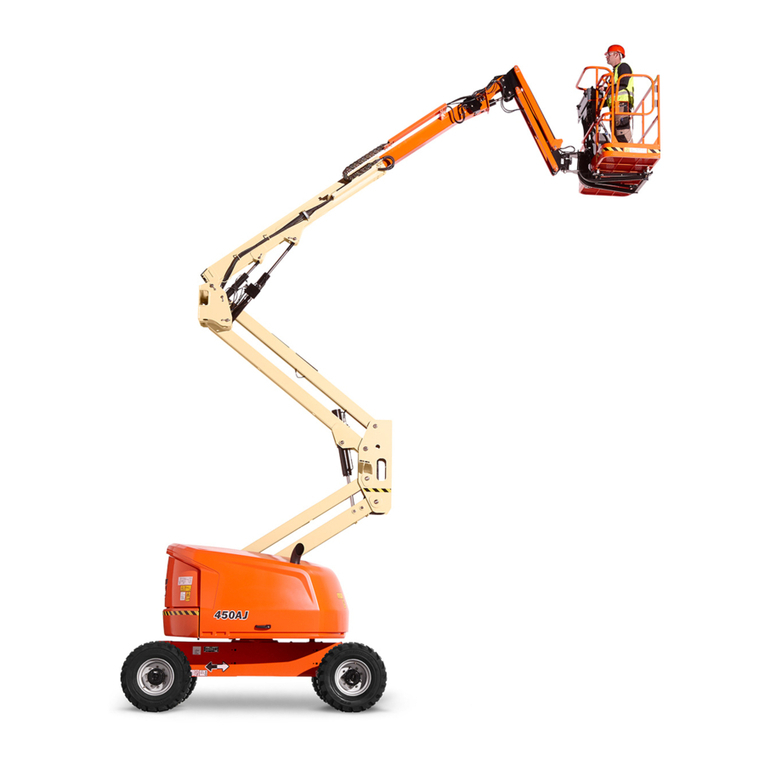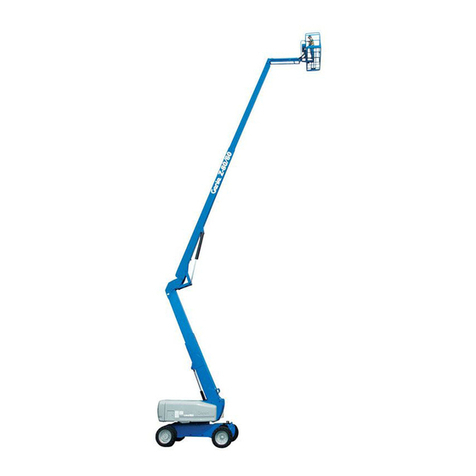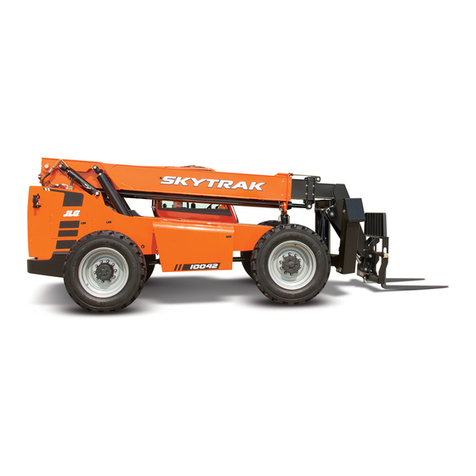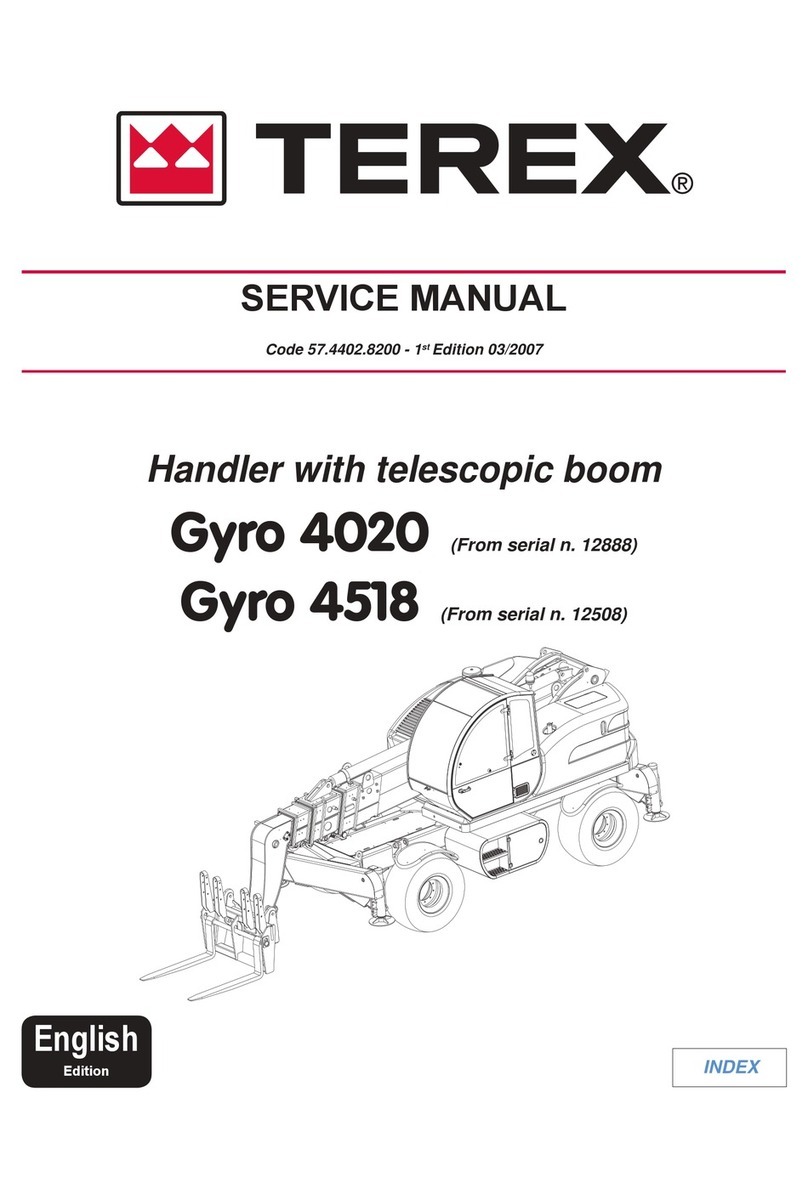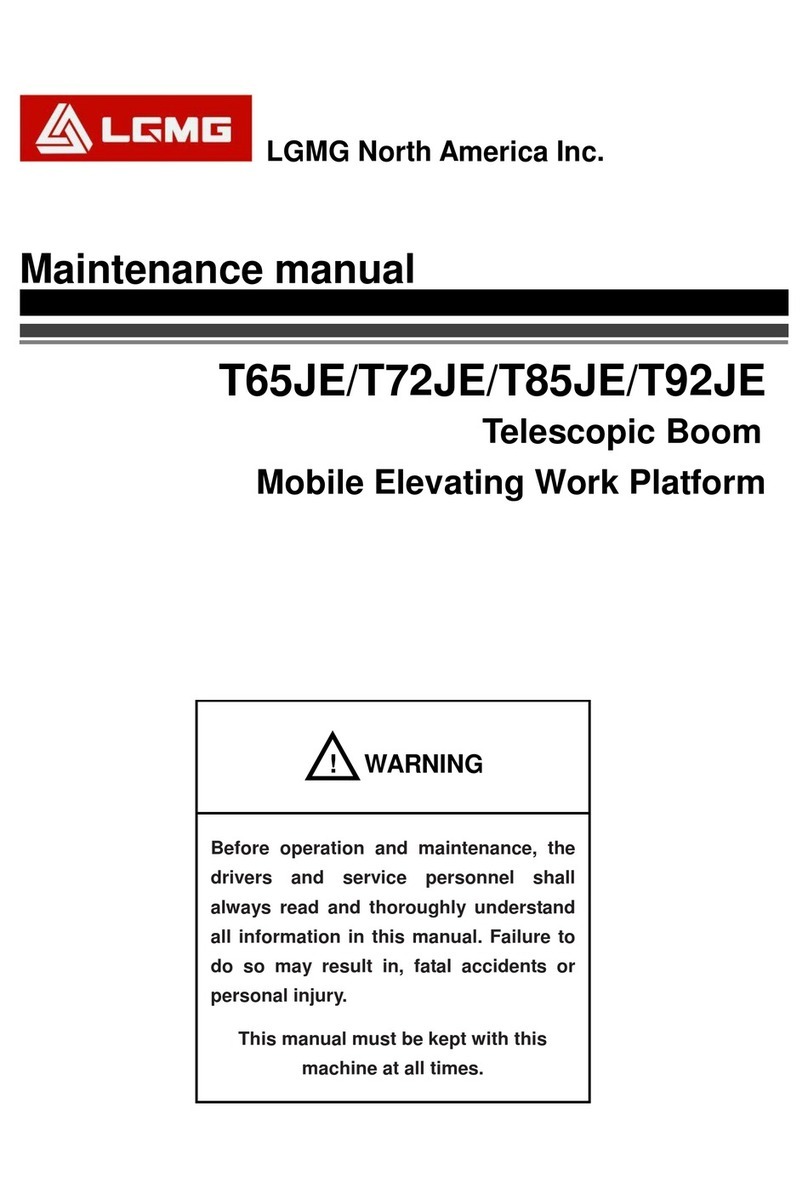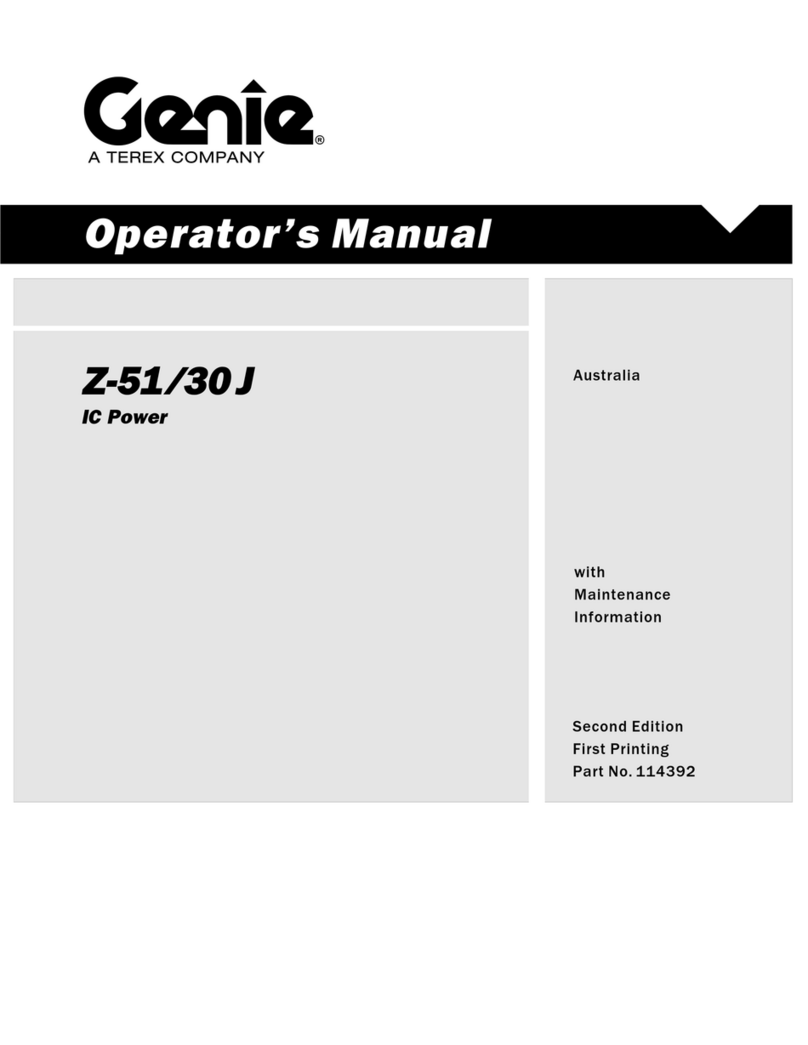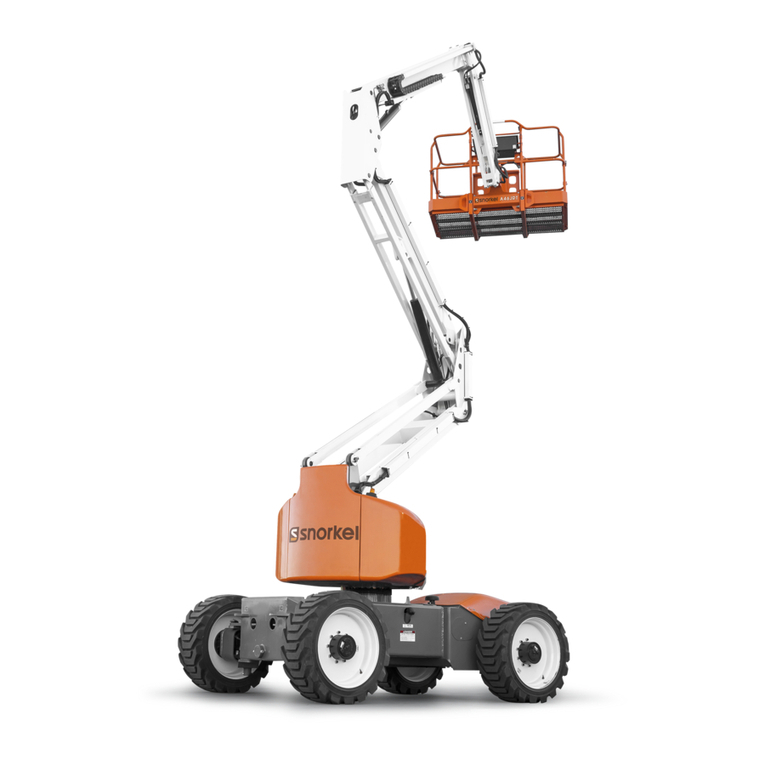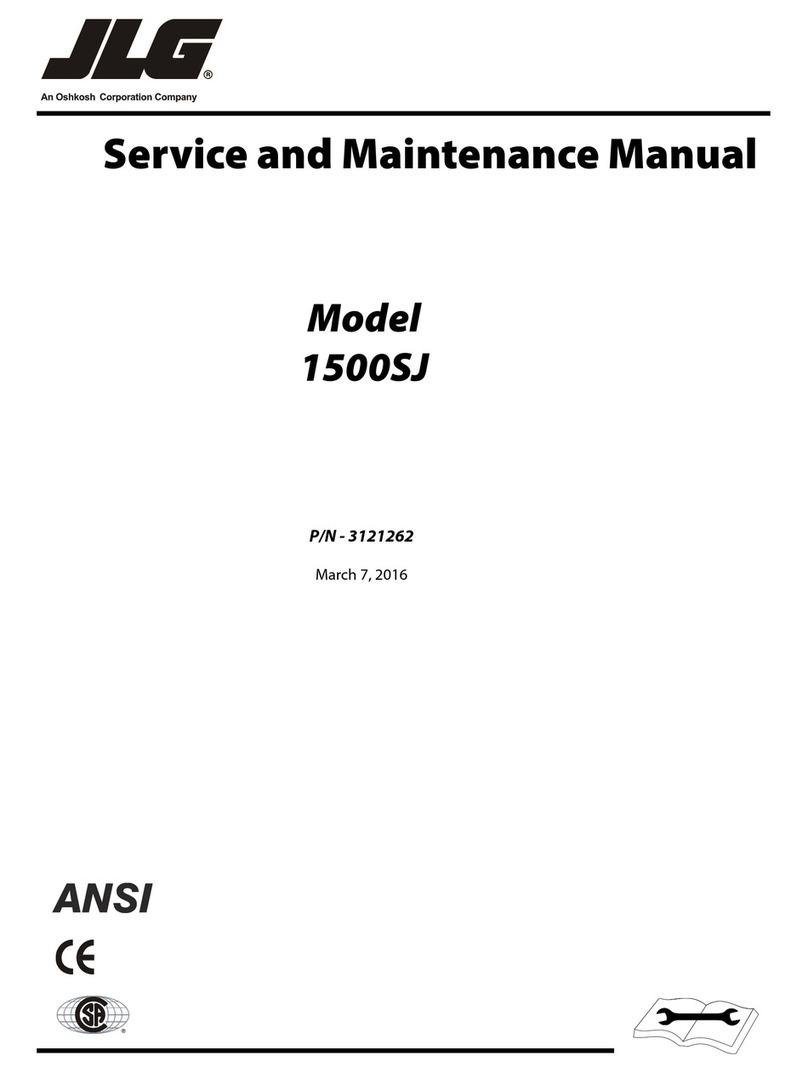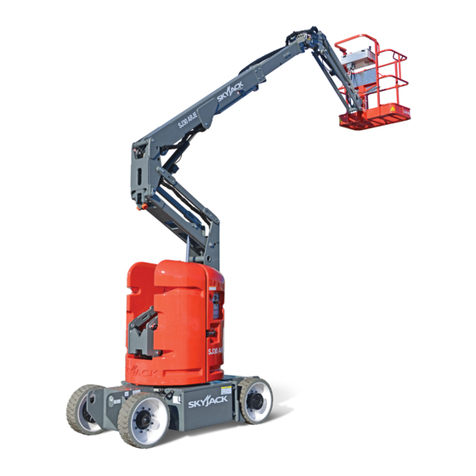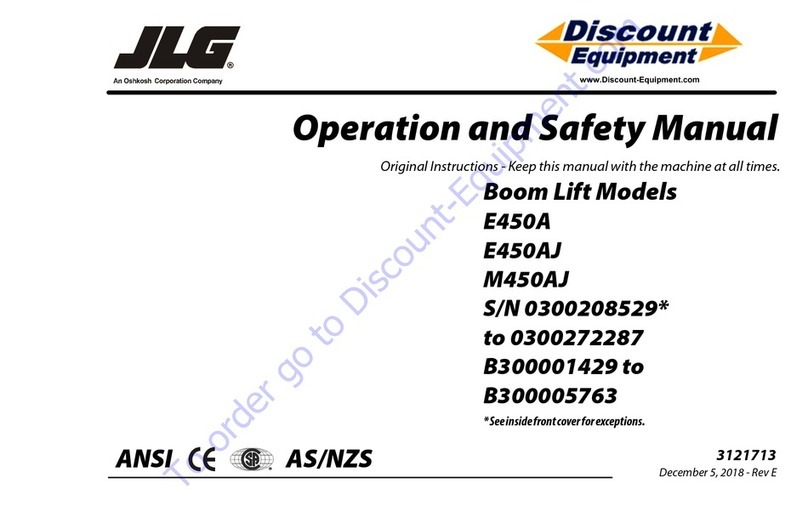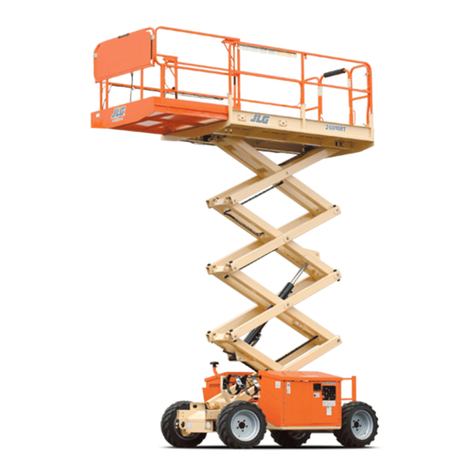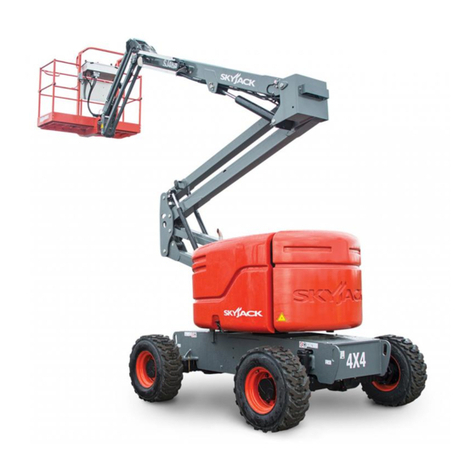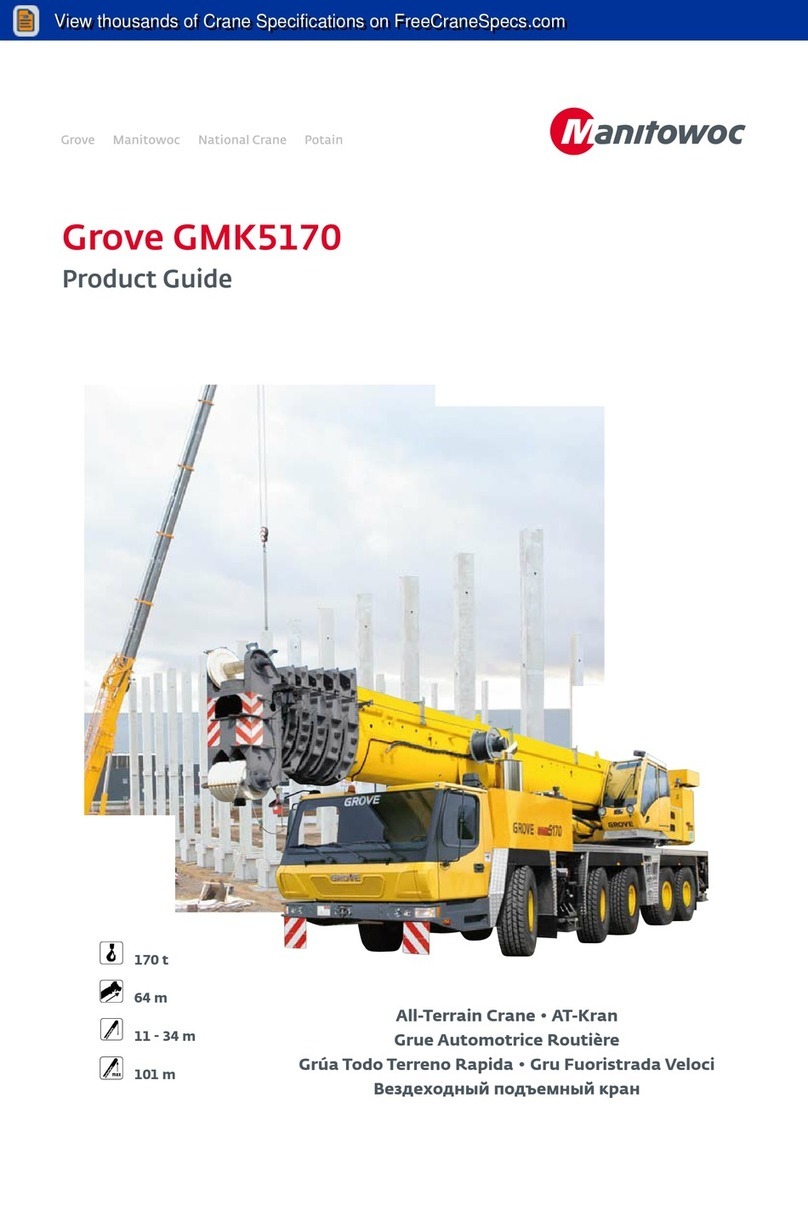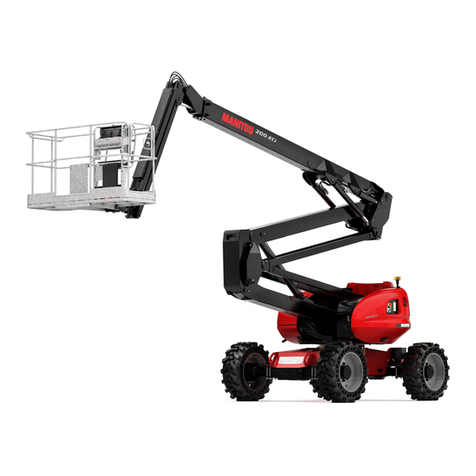
Operator'sManualSecond Edition · Fourth Printing
PartNo.114474 Z-135/70 7
Safety signs and locations
General Safety
31060
31060
52865
97865
82314
28161
114389
28177
28181
1263543
114390
97875
31788 82237
28177
31060
Crush Hazard
Death or serious
injury may result
from platform
crushing
personnel
against boom.
WARNING
28177 C
Keep away from
path of moving
platform.
114390
DANGER
DANGER
114389
WARNING
52865
97875
Tip-over Hazard
Altering or disabling limit
switches can result in machine
tip-over. Machine tip-over will
result in death or serious injury.
DANGER
Do not alter or disable limit
switch(s).
31060 C
28181
Keep off this surface.
WARNING
Fall Hazard
Death or serious injury may result
from climbing or riding on boom.
28181 C
DANGER
Explosion / Burn Hazard
Ignition of explosive gases or contact with corrosive
acid will cause death, burns or blindness
31788 C
Keep all open flames and sparks away. Wear
personal protective equipment, including face
shield, gloves and long sleeve shirt.
READ MANUALS
Read all manuals prior to operation.
DO NOT OPERATE equipment if you do not
understand the information in the manuals.
Consult your supervisor, the owner or the
manufacturer.
31788
Electrocution/BurnHazard
Failure to disconnect all
the batteries before
performing service on this
machine may result in
death or serious injury.
Disconnect all the batteries
before performing service on
this machine.
WARNING
97865 B
97865
Electrocution
Hazard
Contact with
energized
components can
result in death or
serious injury.
82237 B
DANGER
Avoid contact
with energized
components.
82237
28161
28161 C
Crush Hazard
Contact with moving parts can
result in death or serious
injury.
WARNING
Keep away from moving parts.
Tip-over Hazard
Altering or disabling angle sensor
can result in machine tip-over.
Machine tip-over will result in
death or serious injury.
DANGER
Do not move, alter or disable
angle sensor.
82314 B
82314
97715
or 229356
or 230977
LugNutTorque
Dry bolts:
420 ft-lbs /
569.5Nm
Lubricatedbolts:
320 ft-lbs /
433.9Nm
Tip-overHazard
Failure to replace tires with tires
ofsamespecification willresult
in death or serious injury.
Do not use air-filled tires.
Foam-filled tires are critical to
machinestability.
Donotreplace factory-installed
tires with tires of different
specification or ply rating.
Tire Size
445/65D22.5, 18ply Foam-filled
DANGER
97715 B
97715 or 229356 or 230977
97715
or 229356
or 230977
Improper operation or maintenance of
this equipment can result in death or
serious injury.
WARNING
Access by trained and
authorized personnel only.
1263543
1263543
1263543
